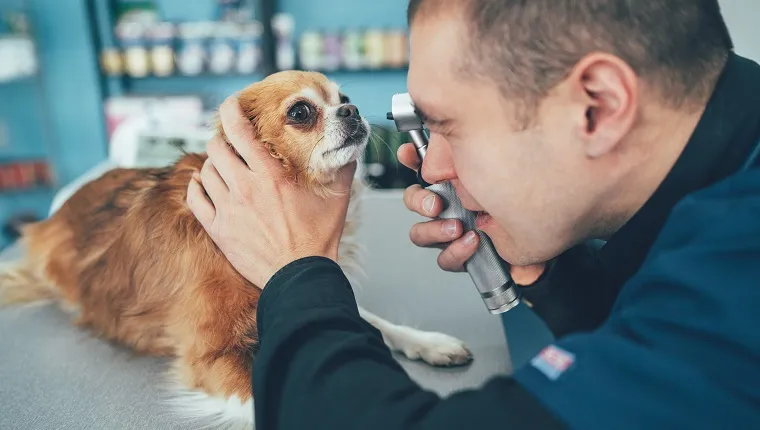Corneal dystrophy in dogs is a medical condition that usually affects both of a dog’s eyes and can cause them to appear cloudy. It is an inherited condition, and it’s a different disease to corneal degradation, which is not usually inherited.
Curiously, this condition often affects different breeds of dog in different ways.
If you see signs that your dog is suffering from eye issues, then you must consult your veterinarian for a proper diagnosis and advice. Here’s what you should know about the symptoms, causes, and treatments of corneal dystrophy in dogs.
Symptoms Of Corneal Dystrophy In Dogs
Corneal dystrophy in dogs mainly produces the symptom of the eyes appearing to be white or cloudy.
The condition can also make it seem like a dog’s eyes are irritating them.
Causes Of Corneal Dystrophy In Dogs

Corneal dystrophy in dogs is inherited. Issues with the way a dog’s body metabolizes fat can be a causal factor, as well.
While the condition can potentially affect all dogs, certain breeds seem to have a little higher likelihood of developing it. Some of the most common breeds of dog that suffer from this condition include:
- Dachshunds
- Shetland Sheepdogs
- Boston Terriers
- Airedale Terriers
- German Shepherds
- Siberian Huskies
- Chihuahuas
Veterinary Treatments
If you suspect that your dog is developing corneal dystrophy, your veterinarian will want to carry out a full physical examination and also pay particular attention to the eyes.
Vets often test the interocular pressure of the eyes as part of the diagnosis process, along with using a substance called fluorescein dye, which can help identify issues with the cornea.
In many instances, dogs might not actually need treatment, especially if the condition does not appear to be progressively worsening or aggravating your dog. Switching to a low fat diet can also help dogs who are dealing with this condition.
In more severe cases, vets may recommend a surgical procedure; although, it’s always important to thoroughly discuss the pros and cons of a canine surgical procedure with your vet.
Has your dog developed corneal dystrophy? How are you and your vet keeping your dog’s eyes healthy? Tell us all about it in the comments below.









